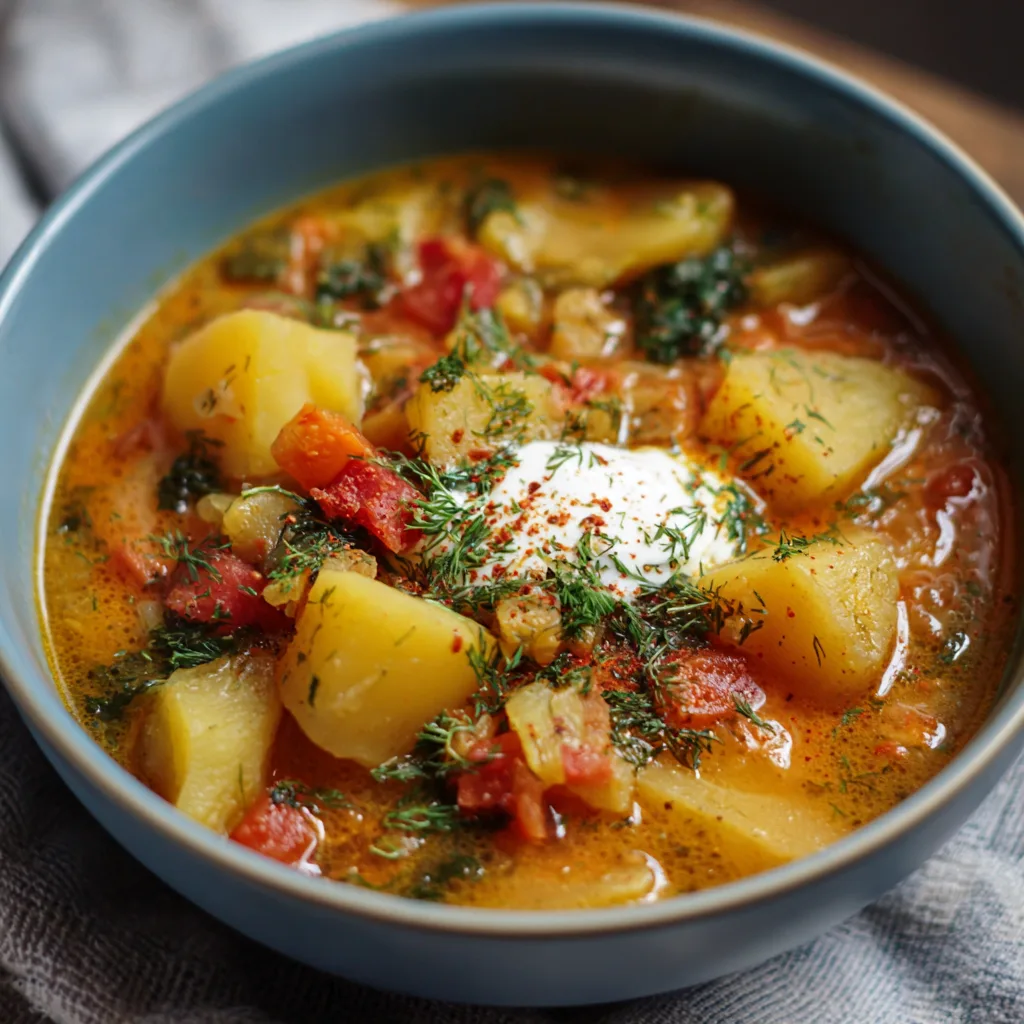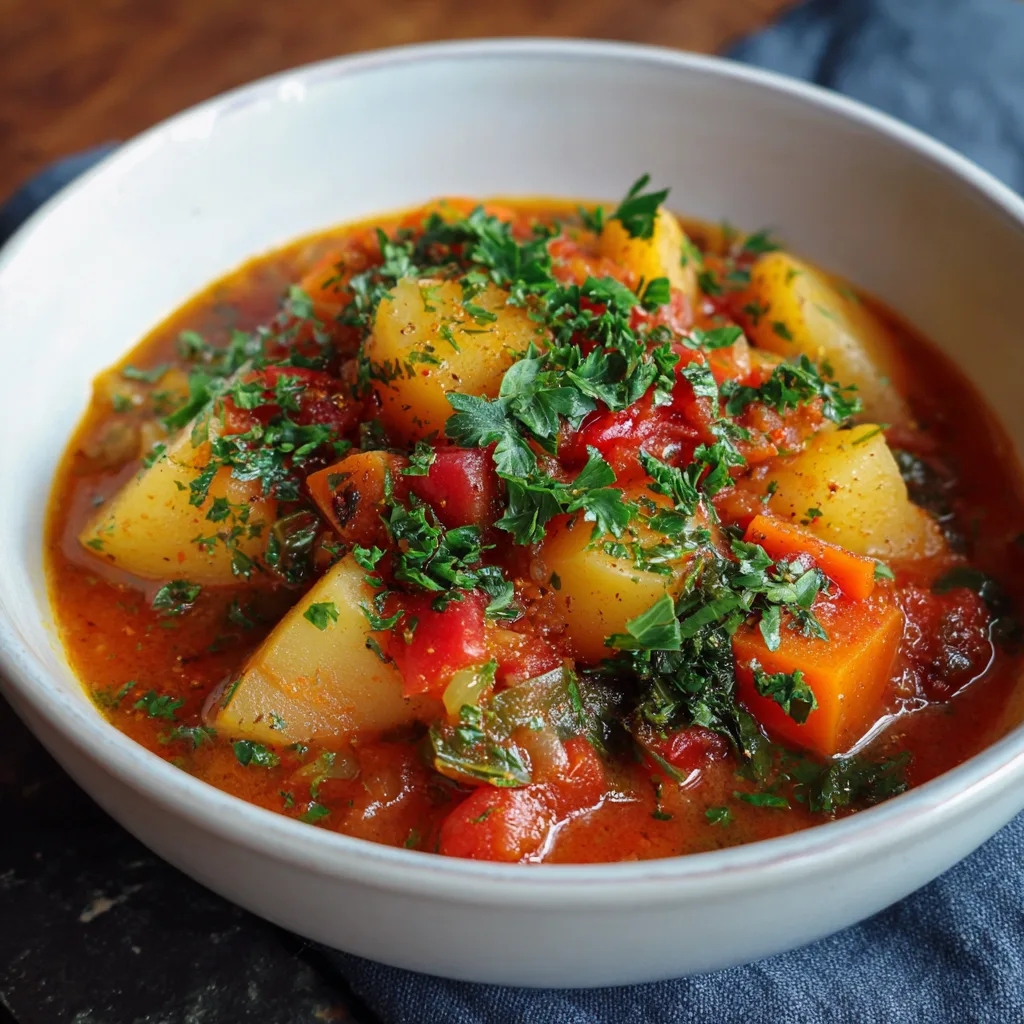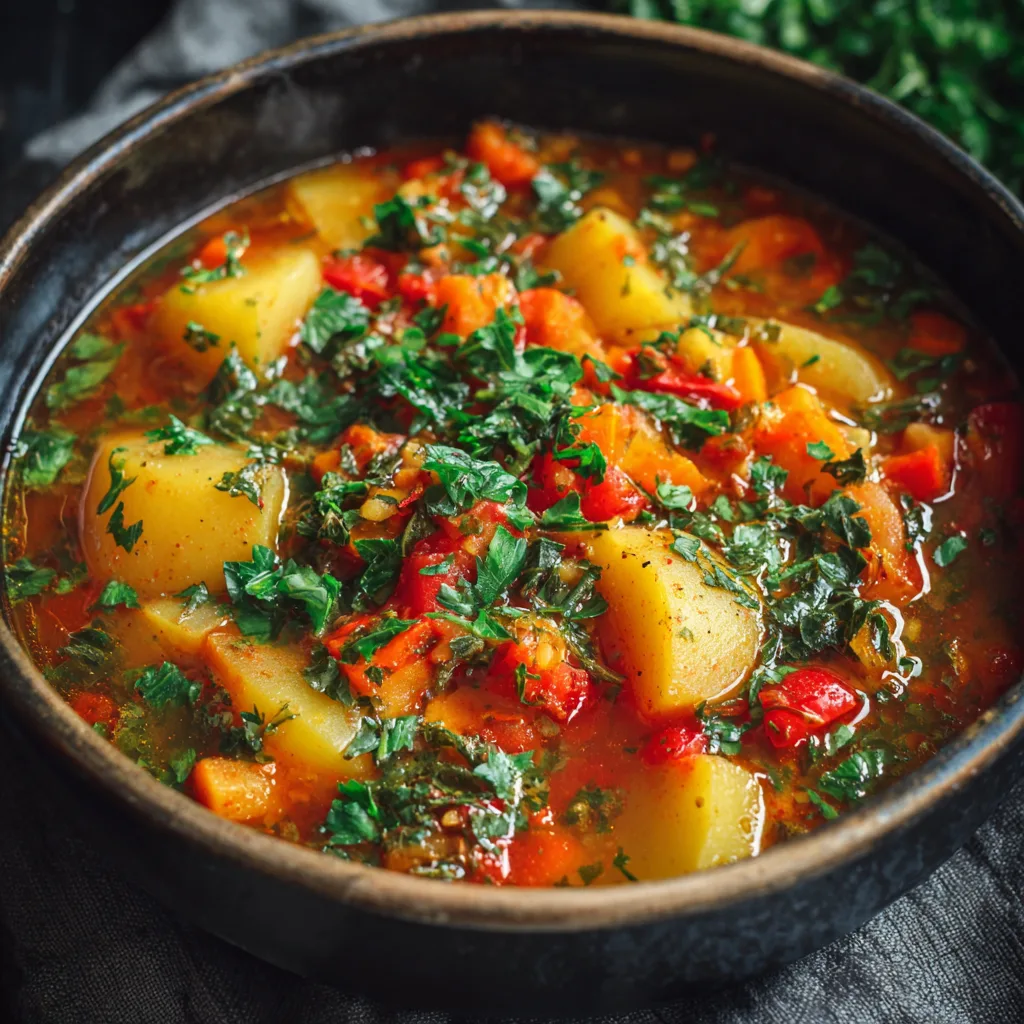Healthy Potato Stew: A Hearty and Nutritious Comfort Food
Potato stew is a classic comfort food, evoking images of cozy kitchens and warm meals shared with loved ones. But beyond its comforting appeal, potato stew can be incredibly nutritious and easily adapted to fit various dietary needs. This article explores how to create a healthy and delicious potato stew, highlighting the ingredients that contribute to its nutritional value and offering tips for customization.
The Nutritional Powerhouse: Potatoes and Beyond
Potatoes often receive a bad rap, but they’re actually packed with nutrients. They are an excellent source of vitamin C, potassium, and vitamin B6. Furthermore, potatoes contain resistant starch, a type of fiber that feeds beneficial gut bacteria and promotes digestive health.
However, a healthy potato stew is more than just potatoes. The addition of other vegetables, lean protein, and flavorful herbs and spices elevates the dish into a nutritional powerhouse. Carrots contribute vitamin A and fiber, while celery adds vitamin K and antioxidants. Onions and garlic provide prebiotics that support gut health and offer potent anti-inflammatory properties. The choice of protein, whether it be chicken, turkey, lentils, or beans, adds essential amino acids necessary for building and repairing tissues.
Building Blocks of a Healthy Potato Stew: Ingredients and Preparation
Creating a healthy potato stew starts with choosing the right ingredients. Opt for low-sodium broth or stock to control sodium intake. Use lean protein sources like skinless chicken breast, ground turkey, or plant-based options like lentils or beans.
Selecting the Right Potatoes:
- Waxy Potatoes: Red potatoes, Yukon Gold potatoes, and fingerling potatoes hold their shape well during cooking, making them ideal for stew.
- Starchy Potatoes: Russet potatoes tend to fall apart and thicken the stew, which can be desirable depending on your preference.
Essential Ingredients:
- Potatoes: As the star ingredient, choose your preferred type based on texture and flavor.
- Aromatic Vegetables: Onions, garlic, and celery form the flavor base of the stew.
- Root Vegetables: Carrots, parsnips, and turnips add sweetness, color, and nutrients.
- Protein: Chicken, turkey, beef, lentils, or beans provide essential protein.
- Broth or Stock: Low-sodium chicken, vegetable, or beef broth adds flavor and liquid.
- Herbs and Spices: Thyme, rosemary, bay leaf, paprika, salt, and pepper enhance the flavor profile.
Preparation Tips:
1. Sauté Aromatics: Start by sautéing the onions, garlic, and celery in a pot with a bit of olive oil until softened. This step builds a flavorful foundation for the stew.
2. Add Protein: Brown the protein of your choice (if using meat) before adding the vegetables. If using lentils or beans, add them later in the cooking process.
3. Combine Vegetables and Broth: Add the potatoes, carrots, and other root vegetables to the pot. Pour in the broth or stock, ensuring it covers the vegetables.
4. Simmer Gently: Bring the stew to a simmer, then reduce the heat and cover. Cook until the potatoes and vegetables are tender, usually around 20-30 minutes.
5. Season and Adjust: Season with herbs, spices, salt, and pepper to taste. Adjust the liquid if necessary, adding more broth or water if the stew becomes too thick.
Flavor Variations and Customization Options
One of the best things about potato stew is its versatility. You can easily adapt the recipe to suit your taste preferences and dietary needs.
- Vegetarian Potato Stew: Omit the meat and use vegetable broth. Add more vegetables like mushrooms, bell peppers, or spinach for extra flavor and nutrients.
- Spicy Potato Stew: Add a pinch of red pepper flakes or a chopped jalapeño to the stew for a spicy kick.
- Creamy Potato Stew: Stir in a dollop of Greek yogurt or a splash of coconut milk at the end of cooking for added creaminess.
- Mediterranean Potato Stew: Add diced tomatoes, olives, and feta cheese for a Mediterranean twist.
- Irish Potato Stew: Incorporate lamb or beef, Guinness beer, and traditional Irish herbs like parsley and thyme.
Enhancing Flavor with Herbs and Spices:
- Thyme: Adds a savory and earthy flavor.
- Rosemary: Provides a piney and aromatic note.
- Bay Leaf: Infuses the stew with a subtle and complex flavor (remove before serving).
- Paprika: Adds color and a hint of sweetness or smokiness.
- Garlic Powder: Enhances the savory flavor.
- Onion Powder: Complements the fresh onion flavor.
- Smoked Paprika: Provides a smoky depth to the stew.
- Chili Powder: Adds a mild warmth and spice.
Health Benefits of Potato Stew
A well-made potato stew offers numerous health benefits, primarily due to the diverse range of nutrients it provides. The combination of vegetables, protein, and fiber contributes to:
- Improved Digestion: Fiber from potatoes, carrots, and other vegetables promotes healthy digestion and prevents constipation.
- Boosted Immunity: Vitamin C from potatoes and other vegetables supports a healthy immune system.
- Heart Health: Potassium from potatoes helps regulate blood pressure and supports heart health.
- Weight Management: The high fiber content of potato stew can help you feel full and satisfied, aiding in weight management.
- Muscle Building and Repair: Protein from chicken, turkey, lentils, or beans is essential for building and repairing tissues.
- Reduced Inflammation: Onions, garlic, and various herbs and spices possess anti-inflammatory properties that can help reduce inflammation throughout the body.
By choosing whole, unprocessed ingredients and avoiding excessive salt and unhealthy fats, you can create a potato stew that is both delicious and incredibly good for you.
Tips for Storing and Reheating Potato Stew
Proper storage and reheating are essential to maintain the quality and safety of your potato stew.
Storing:
- Cool Completely: Allow the stew to cool completely before storing it in the refrigerator.
- Airtight Containers: Transfer the stew to airtight containers to prevent contamination and maintain freshness.
- Refrigerate Promptly: Refrigerate the stew within two hours of cooking to prevent bacterial growth.
- Storage Duration: Potato stew can be stored in the refrigerator for up to 3-4 days.
Reheating:
- Stovetop: Reheat the stew on the stovetop over medium heat, stirring occasionally, until heated through. Add a little broth or water if needed to prevent it from drying out.
- Microwave: Reheat individual portions in the microwave, stirring occasionally, until heated through.
- Freezing: Potato stew can be frozen for longer storage. Allow it to cool completely, then transfer it to freezer-safe containers or bags. Thaw in the refrigerator overnight before reheating. Note that the texture of the potatoes may change slightly after freezing and thawing.
Frequently Asked Questions (FAQ) About Healthy Potato Stew
Is potato stew healthy?
Yes, potato stew can be very healthy. Potatoes provide vitamins and minerals, and when combined with other vegetables, lean protein, and low-sodium broth, it becomes a nutrient-rich meal.
Can I make potato stew ahead of time?
Absolutely! Potato stew often tastes even better the next day as the flavors meld together. Store it in the refrigerator in an airtight container for up to 3-4 days.
What kind of potatoes are best for stew?
Waxy potatoes like red potatoes, Yukon Gold, and fingerling potatoes hold their shape well in stew. Russet potatoes will break down and thicken the stew.
Can I freeze potato stew?
Yes, potato stew freezes well. Allow it to cool completely before transferring it to freezer-safe containers or bags. Thaw in the refrigerator overnight before reheating. The texture of the potatoes may change slightly after freezing.
How can I make my potato stew more flavorful?
Use a variety of herbs and spices like thyme, rosemary, bay leaf, paprika, and garlic. Sautéing the onions and garlic before adding the other ingredients helps to build a flavorful base. You can also add a splash of vinegar or lemon juice at the end for brightness.
What can I add to potato stew to make it thicker?
If you want a thicker stew, you can mash some of the potatoes with a fork or use an immersion blender to partially puree the stew. Alternatively, you can add a cornstarch slurry (cornstarch mixed with cold water) to the simmering stew.
How can I make potato stew vegetarian?
Simply omit the meat and use vegetable broth. Add plant-based protein sources like lentils, beans, or tofu. You can also add extra vegetables like mushrooms, bell peppers, or spinach.
Can I use sweet potatoes in potato stew?
Yes, sweet potatoes can be used in potato stew. They add a sweetness and a different set of nutrients. Consider pairing them with complementary spices like cinnamon or smoked paprika.




